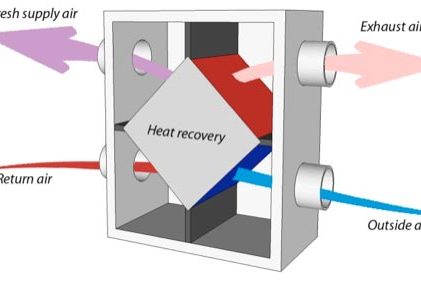Windows
In general, windows account for a proportionately small area of the thermal envelope. At the same time they are one of the most important parts of a home, used for light, ventilation, passive heating, and other aesthetic reasons.
In cold climates, windows often represent a significant heat loss because of their low insulative value relative to the other components of the thermal envelope. Yet windows can also improve our energy efficiency by providing valuable passive heat to a house. Thus, having an appropriate window for the climate, coupled with the right placement, is important to maximize performance.
How can windows help me save energy?
Modern windows have several methods for retaining heat. First, look at the number of panes in the window. For a climate like Alaska, triple-pane windows are typically most cost-effective because you will save enough energy over the life of the window to make up for the extra cost.
Additionally, the panes can be filled with argon or krypton gas to slow heat transfer through the glass. Low-e (or low-emissivity) coatings permit solar heat to enter a house, but block indoor radiant heat from exiting. These windows cost about 10-15 percent more than standard windows, but can reduce radiant heat loss by up to 50 percent. While glass is important, when it comes to thermal performance the weakest part of the window is actually the frame. Wood, vinyl, and fiberglass frames conduct less heat than metal frames.
Fortunately, you don’t need to examine all these elements individually because they’re all contained in one easy-to-read label on every window you see in the store. The National Fenestration Rating Council (NFRC) evaluates windows for overall thermal performance (U-factor), heat transmission from sunlight (Solar Heat Gain Coefficient), air leakage (AL), and condensation resistance (CR).
The most important factor to look at is the U-factor. Lower numbers are better; in a climate like Alaska look for a U-factor of 0.25 or less.
Lastly, proper installation is key for the window to work. Windows need to be sealed tightly within their frames and to the building structure. Preserving the integrity of your home’s vapor barrier, insulation, and exterior finish is critical when installing windows.
Related Resources
| Title | Resource Link |
|---|---|
| Efficient Windows Collaborative | |
| Evaluating Window Insulation Report | |
| National Fenestration Rating Council |










